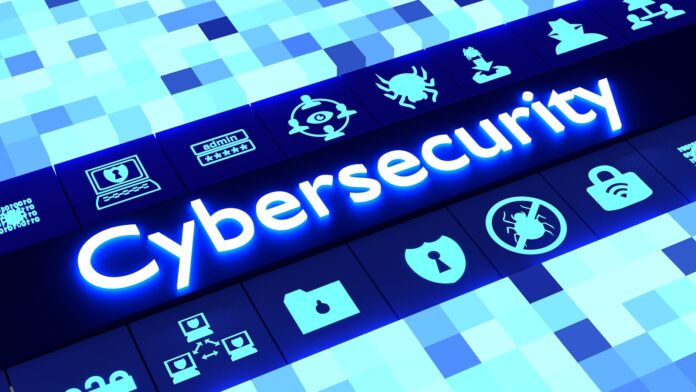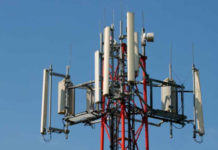
Top Six Cyber Security Threats to Watch Out For
TECH DIGEST – Cybercrimes are estimated to cost the world $6 trillion annually by 2021, up from $3 trillion in 2015, according to Cybersecurity Ventures.
Data breaches cost companies heavily. This has forced businesses of all sizes to consider data protection seriously and implement robust cyber security defenses.
Also, the threat landscape is continuously evolving and attackers are leaving no stone unturned to take advantage of vulnerabilities. This has resulted in sophisticated phishing, ransomware, and malware attacks.
To tackle this challenge, businesses need to work with experienced IT companies that can help establish strict cyber security best practices, provide cyber security training to employees, and conduct continuous monitoring to build an effective defense strategy.
Though attackers are always on the lookout for new ways to defraud companies, a few types of threats remain the most prevalent.
- Phishing attacks
1 in every 99 emails is a phishing attack. Also, almost 30 percent of the phishing emails make it past default security.
Phishing attacks are initiated through fraudulent emails, texts or websites to convince the victim to provide sensitive data like login credentials, important passwords or credit card information.
These attacks are considered the gravest as they may wreak havoc in business systems by obtaining critical information from employees. Further, these attacks involve less investment and low risks for hackers.
Organizations can safeguard their systems from phishing attacks by training their employees and spreading awareness. Employees should be trained to identify a malicious link or email.
Limiting employee access on the basis of their duties can also help curb phishing attempts. Only administrators should be provided with complete access to systems after appropriate authentication.
Again, having anti-phishing software in place will identify falsified emails and fraudulent links/requests from attackers. This will also help limit phishing attacks.
- IoT-based attacks
An IoT attack specifically targets internet-connected smart devices like Wi-Fi-enabled speakers and appliances. The attacker introduces malware into this network to completely control it.
These attacks are directed towards IoT devices because they are overlooked when it comes to applying security patches, thereby making them easy targets.
Organizations should have a hold on the number of IoT devices connected to their network. It is also necessary to update security systems and consistently monitor them.
Ensure to check if any firmware is being run before the installation of IoT devices. Also, make a note of any specific changes or complexity due to these devices on your security system.
- Ransomware attacks
Businesses are under constant risk of encryption malware corrupting their systems. A ransomware attack involves malware that is introduced into the system and denies access to stakeholders.
The ultimatum is either paying the ransom demanded or losing business-critical data forever.
Read Also:
The best way to guard against ransomware attacks is by having anti-virus software and firewalls in place. These will help check the intrusion of malware in your network systems.
Again, having a competent disaster recovery backup plan and a business continuity plan is equally important. Businesses maintaining a cloud-based disaster recovery backup plan will be able to easily recover their data.
A business continuity plan will help with quick restoration with little or no impact on productivity and critical workflows.
- Threats due to unpatched security vulnerabilities and bugs
Bugs arise due to unintentional operating glitches in one or many of the operating systems. Attackers track these bugs and use them as a medium to gain entry into networking systems.
The ideal solution to deal with this kind of attacks is continuous monitoring and tracking of systems. Security specialists should consistently monitor systems and strictly maintain patching schedules. It is best to stay on top of updating software.
Similarly, software that isn’t required should be uninstalled, and outdated software should be necessarily patched to the latest secure version.
The key to minimizing/preventing data breaches is to ensure that every software and IT asset has the latest security patches.
- DDoS attacks
Distributed Denial of Services (DDoS) is a type of cyber attack that works by flooding your system with requests, thereby disabling it from processing legitimate requests.
DDoS attacks are of different types and the countermeasures for each attack vary.
These include DDoS attacks that are volume-based attacks, protocol-based attacks, and application-layer attacks.
Volume-based attacks can be dealt with by simply adding additional bandwidth to handle the flood of requests.
Another way out will be blacklisting IP addresses. However, this approach is not effective for the other two types of DDoS attacks.
Seeking the recommendation of a dedicated team of cyber security specialists can prove effective in these cases. They are well-experienced and have comprehensive knowledge about the different types of approaches that may be used by the attackers.
This will help companies offering IT services to develop a cyber security strategy based on their network type and the probable threats it may face.
Also, setting up a high-end business continuity plan or disaster recovery plan may help to reduce the impact of DDoS attacks.
- Threats due to bring your own device (BYOD)
56 percent of IT security professionals in the United States find the BYOD practice to be one of the biggest threats to endpoint security.
Several organizations encourage their employees to bring their own devices to the workplace in an attempt to improve flexibility, productivity, and employee morale. When doing so, however, stringent security policies should be put in place to eliminate the chances of data compromise.
Cyber security specialists should ensure that they appropriately define access levels to employees based on their job role.
Also, employees should be educated about the importance of adhering to BYOD security policies without compromising business data or networks.



















